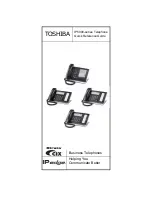
– 5–15 –
5.5.3. Power On / Off Control
The ADP3522 handles all issues regarding the powering ON and OFF of the handset. It is possible to turn on the ADP3522
in three different ways:
8
Pulling the PWRONKEY Low
8
Pulling PWRONIN high
8
CHRIN exceeds CHRDET threshold
Pulling the PWRONKEY low is the normal way of turning on the handset. This will turn on all the LDOs on, except the
SIM LDO, as long as the PWRONKEY is held low. When the VCORE LDO comes into regulation the RESET timer is started.
After timing out, the RESET pin goes high, allowing the baseband processor to start up. With the baseband processor
running, it can poll the ROWX pin of the ADP3522 to determine if the PWRONKEY has been depressed and pull PWRONIN
high. Once the PWRONIN is taken high, the PWRONKEY can be released. Note that by monitoring the ROWX pin, the
baseband processor can detect a second.
5.5.4. Voltage Regulation
Each power source is specified as follows.
Digital Core LDO (VCORE)
The digital core LDO supplies the baseband circuitry in the handset (baseband processor and baseband converter).
The LDO has been optimized for very low quiescent current at light loads as this LDO is on whenever the handset is
switched on.
Memory LDO (VMEM)
The memory LDO supplies the system memory as well as the subsystems of the baseband processor including memory IO,
display, and melody interfaces. It is capable of delivering up to 150 mA of current and is available for either 1.8 V or 3 V
based systems. The LDO has also been optimized for low quiescent current and will power up at the same time as the core
LDO.
Analog LDO (VAN)
This LDO has the same features as the core LDO. It has furthermore been optimized for good low frequency ripple rejection
for use with the baseband converter sections in order to reject the ripple coming from the RF power amplifier.
VAN is rated to 180 mA, which is sufficient to supply the analog section of the baseband converter such as the AD6521,
as well as the microphone and speaker.
TCXO LDO (VTCXO)
The TCXO LDO is intended as a supply for a temperature compensated crystal oscillator, which needs its own ultra-low noise
supply. VTCXO is rated for 20 mA of output current and is turned on along with the analog LDO when TCXOEN is asserted.
RTC LDO (VRTC)
The RTC LDO is capable of charging rechargeable Lithium or capacitor-type backup coin cells to run the real-time clock
module. The RTC LDO supplies current both for charging the coin cell and for the RTC module. In addition it features a very
low quiescent current since this LDO is running all the time, even when the handset is switched off. It also has reverse current
protection with low leakage, which is needed when the main battery is removed and the coin cell supplies the RTC module.
SIM LDO (VSIM)
The SIM LDO generates the voltage needed for 1.8 V or 3 V SIMs. It is rated for 20 mA of supply current and can be controlled
completely independently of the other LDOs.
Applying a low to SIMEN shuts down the SIM LDO. A discharge circuit is active when SIMEN is low. This pulls the SIM LDO's
output down when the LDO is disabled. SIMVSEL allows the SIM LDO to be programmed for either 1.8 V or 2.8V. Asserting a
high on SIMVSEL sets the output for 2.8 V. SIMEN and SIMVSEL allow the baseband processor to properly sequence the
SIM supply when determining which type of SIM module is present.
















































